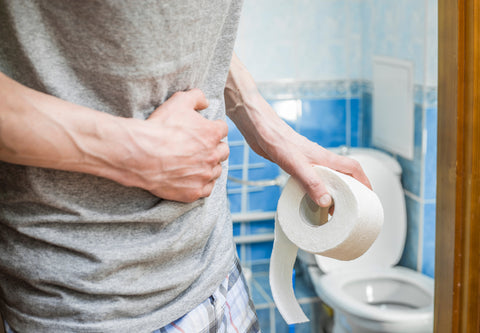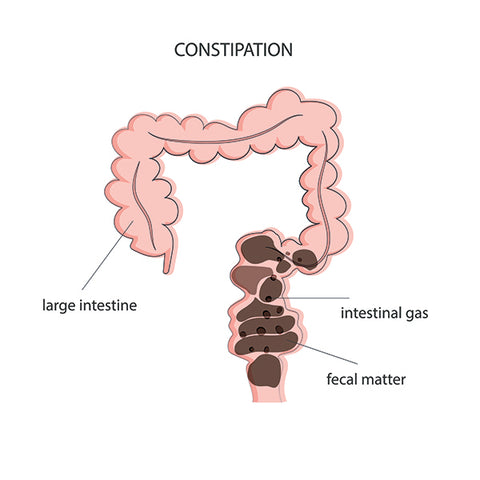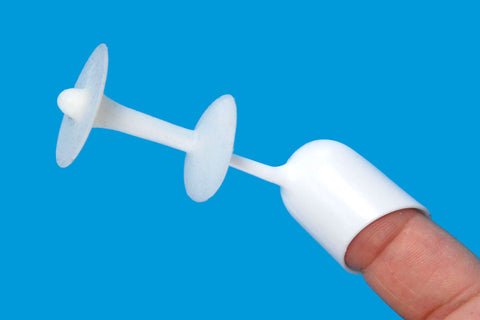Living with bowel incontinence has a significant impact on the lives of sufferers, their family, and carers. Many people with incontinence will find themselves inventing stories to avoid social situations because they fear losing control of their bowel functions. Sadly this is a regular occurrence for those suffering from bowel incontinence. While most patients don’t have regular episodes of incontinence, but the fear of incontinence occurring without warning, has a serious impact on their quality of life. Many people describe struggling to cope in the workplace and have difficulty in relationships due to their incontinence.
There are many reasons why patients develop faecal incontinence, and it affects women and men of all backgrounds and ages. There is no “typical bowel incontinence patient” as each individual will present with symptoms unique to them. As a result, it often takes a while for doctors and patients to settle on a treatment plan that works. Up until now, one solution for managing bowel incontinence has been the use of pads and adult diapers to absorb leakage. With so few options for bowel incontinence management, specialists are currently discussing the effectiveness of bowel incontinence plugs in the treatment of faecal incontinence. Today we are going to discuss the pros and cons of bowel incontinence plugs and how they may improve the quality of life for bowel incontinence patients.
What is Bowel Incontinence?
The most common definition for bowel incontinence comes from the Royal College of Physicians in 1995. It states that faecal incontinence is “the inappropriate passing of liquid or stool”. However, this definition doesn’t take into account the more common, and embarrassing, symptom of incontinence, uncontrollable wind or flatulence. The more recent study by Prelove et all in 2006 uses the term “anal incontinence” to include more side effects of bowel incontinence. This study found that 0.8% and 1.6% of women aged 15-60 have bowel incontinence, while 5.1% of men and 6.2% of women aged over 60 develop bowel incontinence.
Essentially, bowel incontinence is the inability to control bowel movements which causes faeces to leak unexpectedly from the rectum. It ranges from an occasional leakage of stool while passing gas to a complete loss of bowel control.
There are two types of bowel incontinence – urge and passive incontinence. Those with urge bowel incontinence are unable to stop the urge to pass stools, an urge that comes on so suddenly many people are unable to make it to a bathroom in time. People with passive bowel incontinence are not aware of the need to pass stools. However, no matter the cause, bowel incontinence can be embarrassing and impact all elements of a person’s life. Both types of bowel incontinence can include other symptoms, such as:
- Gas
- Bloating
- Constipation
- Diarrhea
Common causes of bowel incontinence include constipation, diarrhea, muscle damage, or nerve damage. Muscle and nerve damage can be associated with giving birth and/or aging. Faecal incontinence may occur temporarily during a bout of diarrhea. However, for others, bowel incontinence is recurring or even chronic.
Muscle Damage
When we talk about muscle damage associated with bowel incontinence, this general refers to the injury of the rings of muscle at the end of the rectum, known as the anal sphincter. This makes it difficult to hold stools back properly. This damage can occur during childbirth, especially if a woman required an episiotomy or forceps during delivery.
Nerve Damage
Injury to the nerves that sense stool in the rectum, or injury to the nerves that control the anal sphincter can lead to bowel incontinence. Nerve damage can be caused by childbirth, spinal cord injury, stroke, or constant straining during bowel movements. Some chronic illnesses like MS and diabetes which can affect these nerves and cause damage that can cause bowel incontinence.
Constipation
Chronic constipation can cause a dry, hard mass of stool – also known as impacted stool – to form in the rectum and be too large to pass. This causes the muscles of the rectum and intestines to stretch and, eventually, weaken. As a result, watery stools from further up in the digestive tract will leak around the impacted stool and out the rectum. Constipation can also cause nerve damage that can cause faecal incontinence.
Diarrhea
Solid stools are easier for the rectum to retain than loose stools. As such, loose stools from diarrhea can cause, or even worsen, faecal incontinence.
Haemorrhoids
Haemorrhoids occur when the veins in your rectum swell. This prevents the anus from closing completely, which can allow stool to leak out.
Storage Capacity
When the rectum is working properly, it stretches to accommodate stools. However, if the rectum is scarred or stiff due to surgery, inflammatory bowel diseases, or radiation treatments, it cannot stretch as much as it needs to. As a result, excess stool can leak out.
Prolapse
Rectal prolapse can cause faecal incontinence. It occurs when the rectum drops down into the anus. The stretching of the rectal sphincter by prolapse causes damage to the nerves that control the rectal sphincter. The longer this is allowed to persist, the less likely the nerves and muscles are to recover.
Surgery
Complex surgery involving the rectum and/or anus, or to treat haemorrhoids can actually cause more muscle and nerve damage. This damage can lead to faecal incontinence, or the worsening of an existing condition.
Who is at Risk for Bowel Incontinence?
There are a number of factors that can increase your risks of developing bowel incontinence. These include:
Age
While bowel incontinence can happen at any age, it is far more common in adults aged over 65.
Gender
While both genders are affected by bowel incontinence, women are more at risk than men. Bowel incontinence can be a complication of childbirth, as well as some menopausal hormone replacement therapy.
Nerve Damage
Those with MS, back trauma from an injury or surgery, or long-standing diabetes are at a greater risk of developing bowel incontinence. This is due to the fact that these conditions often damage the nerves that help control defecation.
Dementia
Bowel incontinence is a symptom of late-stage Alzheimer’s disease. It is also present in cases of late-stage dementia.
Physical Disabilities
Unfortunately, physical disabilities can make it difficult to reach a toilet in time. Further, injuries caused by physical disability can also cause rectal nerve damage which can also lead to bowel incontinence.
What are the Complications of Bowel Incontinence?
The most obvious complications of bowel incontinence are the loss of bowel control, as well as the damage to muscles and nerves. However, there is also the emotional distress aspect to take into consideration. Many people feel they’ve lost their dignity when they lose control of their bowels. This condition leads to shame, embarrassment, frustration, and depression. It is common that those with bowel incontinence to try to hide the problem or avoid social interaction all together.
Skin irritation is also a serious concern. The skin around the anus is very delicate and sensitive. Repeated contact with stools can lead to pain and itching, and eventually lead to ulcers that require medical treatment.
How Can Bowel Incontinence be Prevented?
Depending on the cause of the bowel incontinence, it could be possible to improve or prevent bowel incontinence. Ways to prevent bowel incontinence include:
- Reducing constipation by increasing exercise, eating high-fibre food, and drinking plenty of fluids
- Control diarrhea by treating or eliminating the cause, like intestinal infection
- Avoid straining during bowel movement as this can eventually weaken the anal sphincter muscles or damage the nerves
What are the Traditional Treatments for Bowel Incontinence?
The conservative treatment for anal incontinence includes:
- Pelvic floor exercise
- Anal sphincter exercise
- Bowel retraining
- Specialist dietary management
- Biofeedback
- Neuromuscular electrical stimulation
Medications are also commonly used. These include:
- Bulking agents
- Suppositories
- Enemas
- Anti-motility medications
When conservative therapies and medication don’t work, doctors often turn to surgery that includes anal sphincter repair, rectal prolapse repair, and/or sacral nerve stimulation.
What are Bowel Incontinence Plug?
A bowel incontinence plug is a porous, slightly absorbent foam plug in an anatomical shape, somewhat like a mushroom. In it’s unexpanded for, it looks like a suppository. The porous nature allows air to pass through and the plug is made of silicone, so it is soft and flexible. It is packaged in a dissolvable film that will dissolve on contact with bodily fluids which allows the suppository to release of the mushroom shaped plug. The bowel incontinence plug is inserted using a lubricant and a plastic applicator, easing the process of insertion. The applicator can be disposed of in your regular household waste.
Once inserted, the bowel incontinence plug should sit in the upper end of the anal canal. It is essential you insert the plug the length of the anal canal as it is extremely uncomfortable if the plug expands in the lower end of the canal. The plug is pre-lubricated and filled with liquid, which makes it very flexible. This allows it to get squeezed through the anal canal then adjust inside the insert, conforming to the body, making it comfortable to wear.
The bowel incontinence plug has a broad retainer at its base that rests on the anus. That keeps the plug securely in place and prevents the insert from moving fully into the anal canal. It also works as a handle when removing the insert. It also flattens when inserted, so it remains comfortable. Some brands of anal plugs have string that is securely attached to the plug, similar to a tampon, making it easy to remove.
What are the Pros and Cons of Bowel Incontinence Plugs?
Like any treatment, there are pros and cons. Let’s look at them below:
Pros of Bowel Incontinence Plugs
- Bowel incontinence plugs are helpful when used along with other treatments
- With better understanding of their anatomy, users are able to use the plugs and improve their quality of life
- Plugs come in 2 sizes, small and large (it is usually recommended patients try the smaller size first, then try the large if leakage occurs)
- Bowel incontinence plugs last 12 hours
- They are easily inserted with an applicator
- Plugs are easily removed with a string, similar to a tampon
- They can be disposed of in a woman’s sanitary bin or double wrapped and disposed of in your normal household waste
- Gives users confidence to return to work
- Allows users to carry out normal activities – including riding bikes, swimming, etc.
- Users feel very little sensation when wearing
Cons of Bowel Incontinence Plugs
- Many users feel uncomfortable and embarrassed to use
- May need assistance to use, especially the elderly or those with low mobility
- Larger patients find it difficult to use
- Currently some brands of incontinence plugs are only available on prescription
- There are very few brands available
- Bowel incontinence plugs only come in large and small, and in trials 14/20 users were unable to tolerate either size
- Bowel incontinence plugs require knowledge of the anal canal and lower rectum to correctly position the plug
- The plug is not flushable, requiring access to a sanitary bin, or double wrapping for home disposal
Traditional Bowel Incontinence Products
Traditionally, bowel incontinence is managed using highly absorbent pads and adult diapers (also known as pull ups). While these options might sound scary and uncomfortable, both products have undergone years of development. This means modern incontinence pads and pull ups are comfortable and discreet. No one would know you were wearing an incontinence product. As bowel incontinence plugs are still relatively new, they can be difficult to find. And some patients simply do not find them comfortable to wear. As a result modern faecal incontinence products
Holistic Incontinence provides incontinence products for the treatment of bowel and urinary incontinence. We also carry a range of products to protect your skin, furniture, and bedding, as well as peripheral products like anti-slip mats and canes. Explore our range today or contact our expert staff for kind and caring advice on the right products for you. And enjoy our discreet home shipping so you never have to purchase products in the supermarket. Explore the Holistic Incontinence range of products today.








